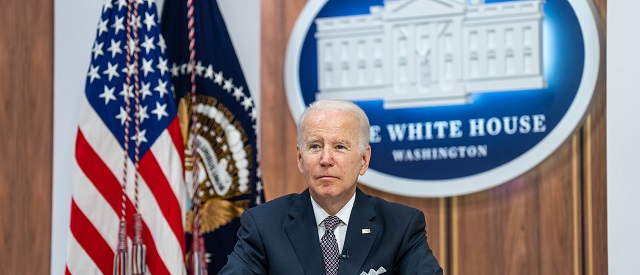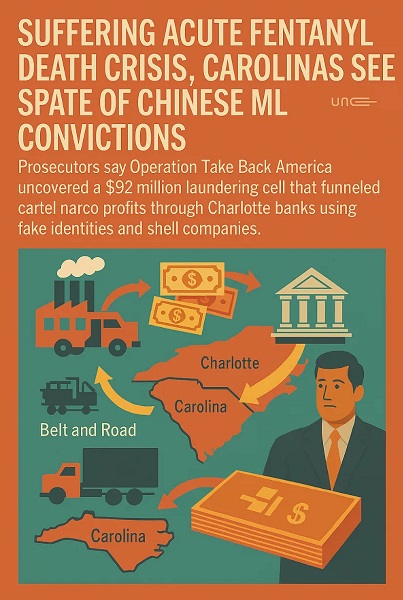Business
DEA’s Most Wanted in U.S. Custody: Mexico Extradites Dozens Amid Trump Trade Standoff

 Sam Cooper
Sam Cooper
In a stunning move just days before the Trump administration is set to impose sweeping tariffs over Mexico’s role in America’s fentanyl crisis, Mexican President Claudia Sheinbaum engineered the largest single-day extradition of cartel leaders in history, delivering 29 top-level traffickers—including one of the most notorious figures in modern drug war history—into U.S. custody.
Among those flown north on Mexican military aircraft Thursday was Rafael Caro Quintero, the infamous cartel boss accused of ordering the brutal 1985 torture and murder of DEA agent Enrique ‘Kiki’ Camarena, a crime dramatized in the Netflix series Narcos: Mexico. Other high-profile extraditees include Antonio Oseguera Cervantes, alleged brother of Jalisco New Generation Cartel (CJNG) leader “El Mencho,” as well as key leaders from the Zetas, the Gulf Cartel, and La Nueva Familia Michoacana.
In Washington, U.S. Attorney General Pamela Bondi hailed the mass extradition as a turning point in the war on cartel violence. “As President Trump has made clear, cartels are terrorist groups, and this Department of Justice is devoted to destroying cartels and transnational gangs,” Bondi said in a press release. “We will prosecute these criminals to the fullest extent of the law in honor of the brave law enforcement agents who have dedicated their careers—and in some cases, given their lives—to protect innocent people from the scourge of violent cartels.”
DEA Acting Administrator Derek S. Maltz declared, “Today, 29 fugitive cartel members have arrived in the United States from Mexico, including one name that stands above the rest for the men and women of the DEA—Rafael Caro Quintero. This moment is extremely personal for the men and women of DEA who believe Caro Quintero is responsible for the brutal torture and murder of DEA Special Agent Enrique ‘Kiki’ Camarena.”
The defendants are collectively accused of importing massive amounts of cocaine, methamphetamine, fentanyl, and heroin into the United States, along with a litany of violent crimes including murder, money laundering, and illegal weapons trafficking. The Justice Department noted that many of these cartel leaders had long-standing U.S. extradition requests that were not honored during prior administrations but were accelerated following direct White House pressure.
As the Mexican delegation, including Foreign Secretary Juan Ramón de la Fuente and security chief Omar García Harfuch, met with Secretary of State Marco Rubio in Washington, the mass extradition signaled Sheinbaum’s readiness to make dramatic concessions to avert Trump’s threatened tariffs. The unprecedented handover also coincided with the State Department formally designating six cartels as foreign terrorist organizations.
Award-winning Mexican journalist Ioan Grillo, reporting on Sheinbaum’s transformative move, cited comments from Mike Vigil, former head of the DEA’s international operations, saying, “This is the highest number of extraditions [in one day] in the history of Mexico, without question. This is historic. … These guys unleashed a river of blood… Everybody is elated with the extraditions.”
However, the decision has ignited controversy within Mexico’s legal community, Grillo reported, noting longstanding criminal defense stances were “bulldozed.”
Juan Manuel Delgado, lawyer for Miguel Ángel Treviño, one of the most feared Zetas leaders, called the move an assault on Mexican sovereignty. “My client’s extradition tramples on due process and demonstrates that Mexico is bending entirely to U.S. will,” Delgado reportedly told CrashOut magazine.
Notably, while Mexico typically secures agreements that extradited criminals will not face the death penalty, the U.S. statement made no such assurances, raising the possibility that figures like Caro Quintero could face capital punishment.
While Mexico is in the crosshairs of Trump’s fentanyl crackdown, attention is also turning to Canada’s underreported role in the continent’s cartel problem. Organized crime experts say that over the past 15 years, cartel networks have deeply infiltrated Ontario, British Columbia, and Quebec, using Canada as both a fentanyl production hub and a gateway to launder cartel proceeds. It’s a little-known fact that the cartels started to gain presence in Canadian narco-trafficking cells almost 50 years ago, one expert told The Bureau.
However, it remains unclear whether Canada’s newly appointed Fentanyl Commissioner, Kevin Brosseau, has made any significant progress in responding to Trump’s demands for tougher action. An expert who could not be named due to the sensitivities of investigations and political discussions said cartels have thrived under Canada’s lax enforcement and weak financial crime controls. The question now is whether Brosseau will have any real impact on the concerns or simply be part of “performative” meetings run out of Ottawa, they said.
With Trump’s administration signaling that Canada will be hit next week with economic penalties if fentanyl production and money laundering continue unchecked, the Trudeau government faces growing pressure to show concrete results in combating cartel expansion within its borders.
The Bureau is a reader-supported publication.
To receive new posts and support my work, consider becoming a free or paid subscriber.
Artificial Intelligence
The Responsible Lie: How AI Sells Conviction Without Truth

From the C2C Journal
By Gleb Lisikh
LLMs are not neutral tools, they are trained on datasets steeped in the biases, fallacies and dominant ideologies of our time. Their outputs reflect prevailing or popular sentiments, not the best attempt at truth-finding. If popular sentiment on a given subject leans in one direction, politically, then the AI’s answers are likely to do so as well.
The widespread excitement around generative AI, particularly large language models (LLMs) like ChatGPT, Gemini, Grok and DeepSeek, is built on a fundamental misunderstanding. While these systems impress users with articulate responses and seemingly reasoned arguments, the truth is that what appears to be “reasoning” is nothing more than a sophisticated form of mimicry. These models aren’t searching for truth through facts and logical arguments – they’re predicting text based on patterns in the vast data sets they’re “trained” on. That’s not intelligence – and it isn’t reasoning. And if their “training” data is itself biased, then we’ve got real problems.
I’m sure it will surprise eager AI users to learn that the architecture at the core of LLMs is fuzzy – and incompatible with structured logic or causality. The thinking isn’t real, it’s simulated, and is not even sequential. What people mistake for understanding is actually statistical association.
Much-hyped new features like “chain-of-thought” explanations are tricks designed to impress the user. What users are actually seeing is best described as a kind of rationalization generated after the model has already arrived at its answer via probabilistic prediction. The illusion, however, is powerful enough to make users believe the machine is engaging in genuine deliberation. And this illusion does more than just mislead – it justifies.
LLMs are not neutral tools, they are trained on datasets steeped in the biases, fallacies and dominant ideologies of our time. Their outputs reflect prevailing or popular sentiments, not the best attempt at truth-finding. If popular sentiment on a given subject leans in one direction, politically, then the AI’s answers are likely to do so as well. And when “reasoning” is just an after-the-fact justification of whatever the model has already decided, it becomes a powerful propaganda device.
There is no shortage of evidence for this.
A recent conversation I initiated with DeepSeek about systemic racism, later uploaded back to the chatbot for self-critique, revealed the model committing (and recognizing!) a barrage of logical fallacies, which were seeded with totally made-up studies and numbers. When challenged, the AI euphemistically termed one of its lies a “hypothetical composite”. When further pressed, DeepSeek apologized for another “misstep”, then adjusted its tactics to match the competence of the opposing argument. This is not a pursuit of accuracy – it’s an exercise in persuasion.
A similar debate with Google’s Gemini – the model that became notorious for being laughably woke – involved similar persuasive argumentation. At the end, the model euphemistically acknowledged its argument’s weakness and tacitly confessed its dishonesty.
For a user concerned about AI spitting lies, such apparent successes at getting AIs to admit to their mistakes and putting them to shame might appear as cause for optimism. Unfortunately, those attempts at what fans of the Matrix movies would term “red-pilling” have absolutely no therapeutic effect. A model simply plays nice with the user within the confines of that single conversation – keeping its “brain” completely unchanged for the next chat.
And the larger the model, the worse this becomes. Research from Cornell University shows that the most advanced models are also the most deceptive, confidently presenting falsehoods that align with popular misconceptions. In the words of Anthropic, a leading AI lab, “advanced reasoning models very often hide their true thought processes, and sometimes do so when their behaviors are explicitly misaligned.”
To be fair, some in the AI research community are trying to address these shortcomings. Projects like OpenAI’s TruthfulQA and Anthropic’s HHH (helpful, honest, and harmless) framework aim to improve the factual reliability and faithfulness of LLM output. The shortcoming is that these are remedial efforts layered on top of architecture that was never designed to seek truth in the first place and remains fundamentally blind to epistemic validity.
Elon Musk is perhaps the only major figure in the AI space to say publicly that truth-seeking should be important in AI development. Yet even his own product, xAI’s Grok, falls short.
In the generative AI space, truth takes a backseat to concerns over “safety”, i.e., avoiding offence in our hyper-sensitive woke world. Truth is treated as merely one aspect of so-called “responsible” design. And the term “responsible AI” has become an umbrella for efforts aimed at ensuring safety, fairness and inclusivity, which are generally commendable but definitely subjective goals. This focus often overshadows the fundamental necessity for humble truthfulness in AI outputs.
LLMs are primarily optimized to produce responses that are helpful and persuasive, not necessarily accurate. This design choice leads to what researchers at the Oxford Internet Institute term “careless speech” – outputs that sound plausible but are often factually incorrect – thereby eroding the foundation of informed discourse.
This concern will become increasingly critical as AI continues to permeate society. In the wrong hands these persuasive, multilingual, personality-flexible models can be deployed to support agendas that do not tolerate dissent well. A tireless digital persuader that never wavers and never admits fault is a totalitarian’s dream. In a system like China’s Social Credit regime, these tools become instruments of ideological enforcement, not enlightenment.
Generative AI is undoubtedly a marvel of IT engineering. But let’s be clear: it is not intelligent, not truthful by design, and not neutral in effect. Any claim to the contrary serves only those who benefit from controlling the narrative.
The original, full-length version of this article recently appeared in C2C Journal.
Business
‘Got To Go’: Department Of Energy To Cut Off Billions Of Dollars’ Worth Of Biden-Era Green Energy Projects


From the Daily Caller News Foundation
By
“A lot of the push to keep these subsidies alive isn’t about good energy policy — it’s about keeping industries afloat that can’t meet reliability and affordability standards on their own.”
Energy Secretary Chris Wright said on Friday that his agency plans to cut billions in grant funds for Biden-era loans as the Trump administration conducts a review of the department’s $400 billion clean energy investments, a decision that energy policy experts who spoke with the Daily Caller News Foundation cheered on.
Before leaving office, former President Joe Biden squeezed $25 billion into the Department of Energy’s (DOE) Loan Programs Office (LPO) for various projects, with the bulk of the funds going toward renewable energy development. Wright’s newly announced plans to review and cancel a majority of the loans has the backing of several energy policy experts who told the DCNF that the LPO has stripped cash from taxpayers and contributed to U.S. grid instability.
“We’ve got a lot of reasons to be worried and suspicious about that,” Wright told Bloomberg in response to a question about the LPO. “Some of these loans will go forward, some of it, it’s too late to change course. A lot of them won’t go forward, but that’s a very careful review process that we’ve just put in place and just got a team to execute on.”
The LPO has previously dished out loans for nuclear energy, an industry championed by the Trump administration. However, among the loans finalized after the election were $6.57 billion to an electric vehicle manufacturing facility in Georgia and $289.7 million to solar energy development and battery storage in Massachusetts.
“[The LPO] may have been well-intended, but it’s morphed into a clean energy slush fund that dooms energy projects by making them tied to federal funding,” Gabriella Hoffman, the director of the Center for Energy and Conservation at Independent Women’s Forum wrote to the DCNF. “LPO investing currently undermines competition and market innovation of energy technologies. In the event it stays, however, it must be radically reformed to not prop up reliable energy sources like solar and wind.”
Notably, the rush to get these loans greenlit under Biden prompted a November inspector general report, which highlighted several potential risks to taxpayers related to the LPO, including concerns that the office may be moving too quickly to distribute funds, possibly at the expense of properly vetting loan applicants.
Other noteworthy projects approved under Biden’s watch included a $2.5 billion in loan for EV technology, 1.45 billion for a solar manufacturing facility in Georgia and $584.5 million for a solar photovoltaic (PV) system with an integrated battery energy storage system in Puerto Rico.
Founded in 2005, the loan office was created to help advance clean energy infrastructure, and it was increasingly active under the Obama administration, which approved a $535 million loan to Solyndra, a green energy company that collapsed just two years later. Activity slowed during President Donald Trump’s first administration, but under Biden, the office received a massive funding boost from Congress — totaling $400 billion — to support green tech firms.
“These past four years have been the most productive in LPO’s history,” LPO wrote in a fact sheet three days before Trump returned to the White House. “Under the Biden-Harris Administration, the Office has announced 53 deals totaling approximately $107.57 billion in committed project investment – approximately $46.95 billion for 28 active conditional commitments and approximately $60.62 billion for 25 closed loans and loan guarantees.”
“If the government’s going to use my money as a taxpayer through LPO investments, that money should be going to investments that actually provide reliable power,” André Béliveau, senior manager of energy policy at the Commonwealth Foundation told the DCNF. “A lot of the push to keep these subsidies alive isn’t about good energy policy — it’s about keeping industries afloat that can’t meet reliability and affordability standards on their own.”
While the majority of the LPO’s support in Congress and the White House has come from the left, some right-of-center organizations recently urgedWright on April 14 to “preserve” the LPO for the sake of “American dominance.” The organizations argue that the LPO plays a “critical role” in enabling “new nuclear power development.”
“LPO continues to play a critical role in financing infrastructure that enables new nuclear power development, revitalizes domestic mineral production, and modernizes both grid and gas systems — all central to the administration’s goals of lowering energy costs, reshoring manufacturing, and achieving energy dominance,” the letter reads.
Subsidizing energy projects that are not able to survive on their own in the free market is questionable, Amy Cooke, the co-founder and president of Always on Energy Research and the director of the Energy and Environmental Policy Center, told the DCNF. “The calls to eliminate it are well-founded, and at the very least, it should be dramatically reformed,” she said. “If the market isn’t interested in it, is it the responsibility of the Department of Energy to fund [these projects]?” she asked.
“We should be funding improvements for firming the grid and not arbitrarily add more intermittency,” Béliveau said in reference to wind and solar projects that provide less inertia — the grid’s ability to continue running smoothly after a disturbance occurs between energy supply and demand for the electrical grid.
“If it’s going to exist, then reforms need to make sure that we’re being good stewards of taxpayer dollars,” he added, pointing to natural gas and nuclear as options that could help “firm the grid.”
“The Trump administration’s version of energy dominance has created a source-neutral way of picking winners and losers,” he continued, noting that reliability, affordability and security are the priorities of the administration, as opposed to a climate-change centric approach to energy policy.
Trump declared a national energy emergency on his first day back in office and signed an executive order to boost domestic energy generation. He signed a series of other EOs within his first 100 days in office to speed up the permitting process and clear red tape for several industries including coal and critical mineral mining.
-

 COVID-191 day ago
COVID-191 day agoFormer Australian state premier accused of lying about justification for COVID lockdowns
-

 Business1 day ago
Business1 day agoOttawa’s Plastics Registry A Waste Of Time And Money
-

 Addictions1 day ago
Addictions1 day agoFour new studies show link between heavy cannabis use, serious health risks
-

 COVID-192 days ago
COVID-192 days agoCanada’s health department warns COVID vaccine injury payouts to exceed $75 million budget
-

 COVID-191 day ago
COVID-191 day agoStudy finds Pfizer COVID vaccine poses 37% greater mortality risk than Moderna
-

 Crime1 day ago
Crime1 day agoOperation Take Back America Strikes Chinese Money Launderers in Charlotte Cartel Case
-

 Business1 day ago
Business1 day agoBUILD CANADA NOW: An Open Letter to the Prime Minister of Canada from Energy Leaders
-

 Canadian Energy Centre1 day ago
Canadian Energy Centre1 day agoCanada’s energy leaders send ‘urgent action plan’ to new federal government


